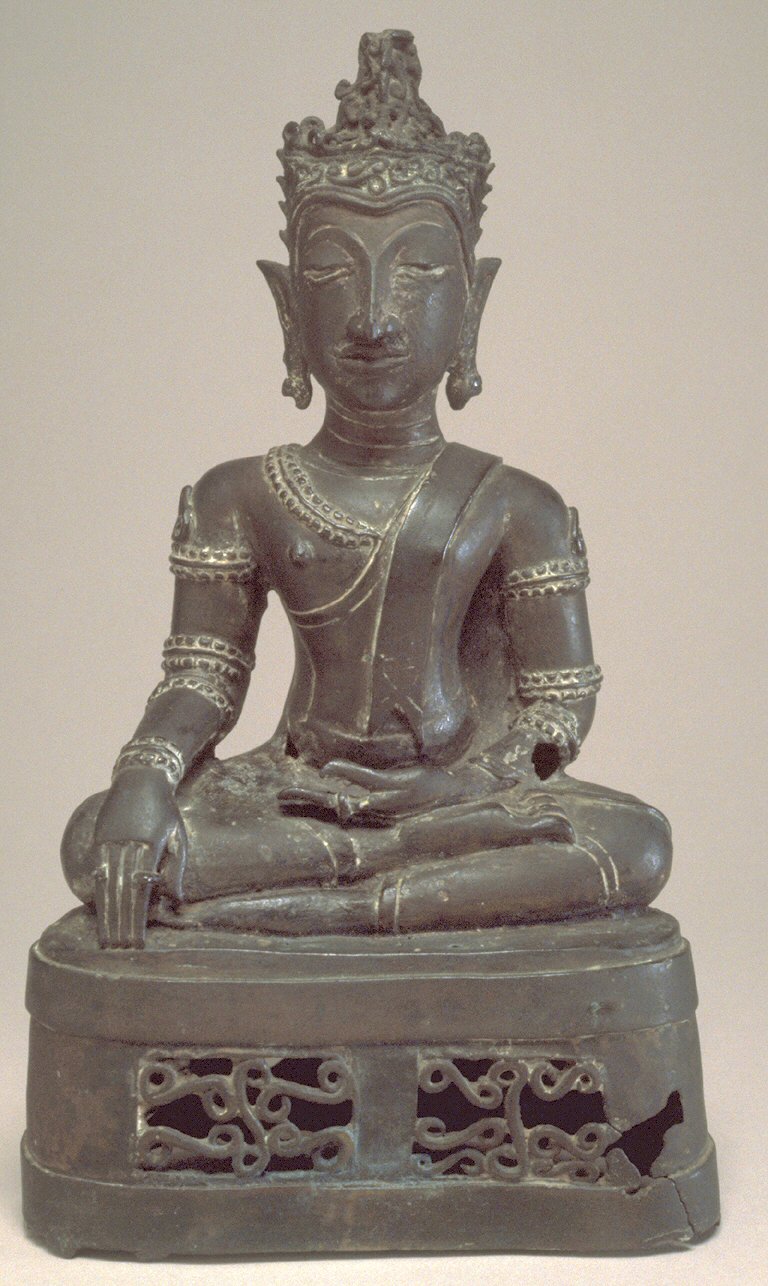Seated Crowned Buddha in "Maravijaya"
(Southeast Asia )
The overall shape and the treatment of the sockets is suggestive of a pan-Thai tendency observable in both Lan Na and Ayutthaya. Nevertheless, it is possible that the facial type had a long local history.
The re-emergence of the crowned Buddha as an iconic type is an important phenomenon. It is the story of Jambupati that has been the central explanatory tradition within Thailand. Perhaps the story was given new life in Lan Na around 1500 and then spread to other regions.
The casual freedom with which the decorative elements of the crown and base have been executed, endowing this sculpture with considerable vivacity, suggests a moment at the beginning of a tradition, when the sculptors were not hamstrung by rules or expectations. The 'S'-spirals and hooks are related in character to the decorative elements made of coiled lengths of clay and placed on the shoulder of stoneware jars.
Inscription
Provenance
Provenance (from the French provenir, 'to come from/forth') is the chronology of the ownership, custody, or location of a historical object. Learn more about provenance at the Walters.
Nakhon Kasem, Bangkok; Alexander B. Griswold, Monkton, 1948 (?), [presented to the Breezewood Foundation, 1965, inv. no. 549]; Walters Art Museum, 1992, by bequest.
Exhibitions
| 1995 | Unearthly Elegance: Buddhist Art from the Griswold Collection. The Walters Art Gallery, Baltimore. |
Geographies
Thailand (Lan Na) (Place of Origin)
Measurements
at knees: 9 3/16 x 4 3/4 in. (23.3 x 12 cm)
Credit Line
Bequest of A. B. Griswold, 1992
Location in Museum
Not on view
Accession Number
In libraries, galleries, museums, and archives, an accession number is a unique identifier assigned to each object in the collection.
In libraries, galleries, museums, and archives, an accession number is a unique identifier assigned to each object in the collection.
54.2747


